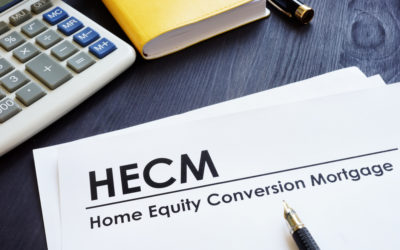What is the Current Net Principal Limit on a Reverse Mortgage
Reverse mortgages convert a portion of the equity a homeowner has built in their home into a method of funding for retirement. The Home Equity Conversion Mortgage (HECM) program allows homeowners to access this equity in a safe and effective way. However, there are limits to the total amount that a borrower can access using these methods.
One limit is the net principal limit that is placed on a reverse mortgage. The net principal limit is the total amount that a borrower receives after fees and closing costs are factored in.
What is the Net Principal Limit on a Reverse Mortgage?
The net principal limit in a reverse mortgage is the maximum amount that a borrower can receive after being approved for a HECM loan. This amount will be less than the total amount of equity that a homeowner may own in their home, and it may be less than the total amount that a borrower is initially quoted during the HECM application process.
Reverse mortgage limits factor in costs like closing costs, fees, FHA appraisals, and other costs that borrowers must cover when completing a HECM application. However, GoodLife Reverse Mortgages has a simple, streamlined, and effective process to ensure that we offer our clients a high value loan that’s right for their situation.
Note that, due to a 2013 regulation change, new reverse mortgage principal limits are in place. Borrowers can now only receive a maximum of 60% of the value of their loan during the first year of owning the loan.
What are the Costs and Fees Associated with Reverse Mortgages?
When financing your retirement through a reverse mortgage, it’s important to be aware of the costs associated with completing, submitting, and being approved for your application. Here are a few of the reverse mortgage fees you’re likely to encounter:
- Origination fees
- Real estate closing costs
- Credit checks
- Surveys & inspections
- Mortgage insurance premium
- Taxes
Remember, the reverse mortgage net principal limit is the total value of your loan once these costs are taken into account. Here’s how that amount is calculated.
How Do You Calculate the Net Principal Limit?
To calculate the reverse mortgage net principal limit, your lender will first determine the initial principal limit, which is the total amount that a borrower is eligible for before costs and fees are factored in. To arrive at this amount, lenders assess factors like the borrower’s age, current interest rates, appraised value of the home, and the equity they own in the home.
Then, once the initial principal limit is determined, reverse mortgage costs and fees are subtracted from that total. The amount that remains is the net principal limit. If you’re curious about HECM limits and other reverse mortgage guidelines, be sure to read out informative blog posts on those topics — or, contact a GoodLife Reverse Mortgage Specialist, who will be happy to walk you through the reverse mortgage application process, including associated costs.

 1-866-840-0279
1-866-840-0279





